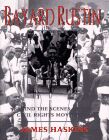
Author: Satoshi Kitamura
Title: Comic Adventures of Boots
Publisher: Farrar Straus Giroux Date: 2002
Age level: PreK Primary (K-2)
Summary:
Follow Boots on three different adventures with his friends in this funny graphic novel!
Strengths:
The illustrations in this book are great. They are really put together and capture the emotions of Boots and all his friends. The stories are simple and the topics are great for young children. Having three separate short stories breaks it up and makes it a perfect length for the younger children. Not to mention, the stories are highly entertaining.
Concerns:
I have no concerns with this book! It is great for young elementary school children.
Classroom use/Other comments:
This is a good book to show how it is important to illustrate your stories and encourage children to do so with their own. It is also a good book to let children read during free time because the short stories allow them enough time to finish.




